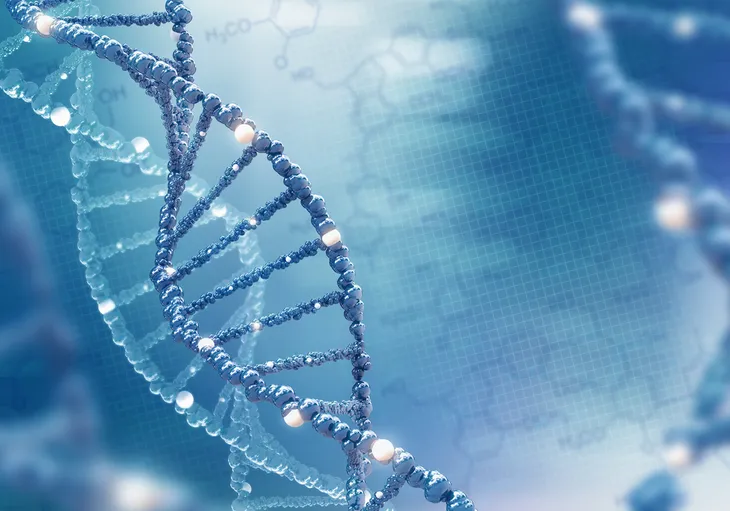- Non-alcoholic fatty liver disease is a condition that develops when too much fat is stored in the liver cells.
- NAFLD affects about one-quarter of the U.S. population.
- The good news is there are steps you can take to help reduce your risk of NAFLD and it all starts with getting informed.
The liver is a vital organ that performs over 500 functions, such as removing waste products, regulating blood sugar levels, and helping create essential nutrients for your body. But sometimes fat can build up in the liver which can lead to damage and scarring. This is known as non-alcoholic fatty liver disease (NAFLD). In severe cases, the scarring may lead to liver failure.
The good news is there are steps you can take to help reduce your risk of NAFLD and it all starts with getting informed. Follow along as we look at what NAFLD is and the common symptoms to watch for. We’ll also look into what causes it, how it’s treated, and what you can do to prevent it.
What Is Non-Alcoholic Fatty Liver Disease?
You may have heard of alcohol-related liver disease which causes a build of fat from excessive alcohol consumption. Non-alcoholic fatty liver disease is similar in that fat builds up in the liver, but the key difference is that it occurs in people who drink little to no alcohol.
As the name suggests, NAFLD is a condition that develops when too much fat is stored in the liver cells. The Mayo Clinic also says that it’s becoming increasingly common, affecting about one-quarter of the U.S. population. It’s also the most common form of chronic liver disease.
NAFL vs. NASH: What’s the Difference?
There are two main types of non-alcoholic fatty liver disease including non-alcoholic fatty liver (NAFL) and non-alcoholic steatohepatitis (NASH). Healthline says, unfortunately, health experts don’t quite understand why an individual develops one or the other but it is possible to be diagnosed with one type and then the other later. So, what’s the difference between the two?
NAFL causes fat to build up in the liver but it usually causes little to no inflammation. It can cause pain but it doesn’t typically cause liver damage. NASH on the other hand is more serious. It does usually cause inflammation as well as fat build-up in the liver. This type can also cause liver scarring, leading to cirrhosis. If left untreated, it may lead to liver cancer.
Common Symptoms of Non-Alcoholic Fatty Liver Disease
Oftentimes NAFLD may not cause any noticeable symptoms. This is why it’s often referred to as a silent liver disease. That said, symptoms are still possible and you should be on the lookout.
The Mayo Clinic says that one possible sign of NAFLD is pain or discomfort in the upper right abdomen. It may also cause fatigue. If these symptoms develop and there’s no other apparent cause, contact your doctor.
Signs of Non-Alcoholic Steatohepatitis (NASH)
Like NAFLD, it’s possible for NASH to not present symptoms. Signs may develop after cirrhosis has developed which can take years. But it’s still important to be aware of the potential signs.
Johns Hopkins Medicine suggests some possible signs of NASH include severe tiredness, weakness, and unexplained weight loss. Spider-like blood vessels on the skin and long-lasting itching can also be signs of NASH. As can yellowing of the eyes or skin, also known as jaundice.
The source also points out that NASH that turns into cirrhosis may present additional symptoms. Some of these include fluid retention, confusion, muscle wasting, and internal bleeding. Cirrhosis is very serious because it can lead to liver failure, which may require a liver transplant.
What Causes Non-Alcoholic Fatty Liver Disease?
Unfortunately, the exact cause of NAFLD isn’t fully understood. It’s unclear why fat builds up in the liver for some people while others don’t. That said, Healthline says experts believe that certain health conditions, diets, the digestive system, and genes may play a role.
There are also some lifestyle factors that may increase your risk of NAFLD. But keep in mind, some people can develop NAFLD without any previous risk factors. Nonetheless, it’s still worth knowing what they are. Let’s take a look at the possible risk factors next.
Possible Risk Factors
There is a wide range of health conditions and lifestyle factors that may increase your likelihood of developing NAFLD. For starters, the Mayo Clinic says having high cholesterol and high levels of triglycerides in the blood may increase your risk. Metabolic syndrome and being obese (especially when fat is condensed in the abdomen) can also increase your risk of NAFLD. A diet high in fructose, and a disruption in your microbiome may also play a role.
Other conditions that may increase your risk include sleep apnea, type 2 diabetes, hypothyroidism, hypopituitarism, and polycystic ovary syndrome. The source also notes that NASH specifically is more common in seniors, individuals with diabetes, and individuals who have body fat concentrated in the abdomen.
Complications
As mentioned earlier, the major complication of fatty liver disease is cirrhosis. Cirrhosis develops as a response to inflammation and causes scarring in the liver. This is a serious cause for concern because scar tissues prevent your liver from working normally.
The Mayo Clinic also states that as cirrhosis progresses, and if left untreated, it can lead to fluid buildup in the abdomen, swelling of the veins in the esophagus, confusion, drowsiness, and slurred speech. It may also lead to liver cancer and end-stage liver failure. The source notes that 5- to 12-percent of individuals with NASH develop cirrhosis.
When to See a Doctor
Since NAFLD can often present no symptoms, knowing when to see a doctor can be difficult. However, routine blood work may be an effective way to screen for NAFLD. Healthline says the condition can often be detected through a blood test if high levels of liver enzymes are detected.
High levels of liver enzymes may also indicate other liver diseases, but it’s at least a starting point for your doctor. They’ll be able to rule out other conditions before diagnosing NAFLD.
How Is Non-Alcoholic Fatty Liver Disease Diagnosed?
If your doctor suspects you have NAFLD they’ll likely start with a physical exam. They’ll review your physical symptoms and look for signs of resistance to the hormone that regulates glucose in the body. They’ll also be looking for signs of cirrhosis.
Healthline says your doctor may require further testing, such as an ultrasound of the liver or transient elastography, to confirm a diagnosis. If these tests fail to confirm a diagnosis but your doctor still suspects NAFLD then they may suggest a liver biopsy to look for signs of inflammation and scarring.
How Is Non-Alcoholic Fatty Liver Disease Treated?
Receiving a medical diagnosis of any kind can be scary. But Johns Hopkins explains that if you have NAFLD without any medical problems, you likely won’t need any form of treatment. That said, your doctor may recommend some lifestyle changes to help control or reverse the fat buildup. Plus making new healthy habits will benefit your overall health too.
The source says one lifestyle change you can make is losing weight (if you’re overweight or obese). But first, work with your doctor to find out what a healthy weight is for you. If you have high cholesterol or diabetes, work with your doctor to find out how you can control it. Finally, the source also notes avoiding alcohol can also help control or reverse fat buildup in the liver.
How Is NASH Treated?
Currently, there is no medication available to reserve fat buildup in your liver. But Johns Hopkins Medicine says if you have NASH, your doctor will want to make sure you control the conditions that may be contributing to the disease.
This may include taking medication for cholesterol, blood pressure, or diabetes. Your doctor may also recommend limiting over-the-counter medications and avoiding alcohol altogether. They may also refer you to a liver specialist for more support.
What Is the Outlook?
While NASH can lead to more serious outcomes like cirrhosis and liver failure, many people can live normal lives with NAFLD. However, that doesn’t mean you should keep up with your unhealthy habits that may be contributing to the fat build-up in the first place.
A combination of managing the contributing health conditions and improving your daily habits can help preserve your liver. You may even be able to reverse the liver damage in the early stages of the disease.
Prevention
Whether you’re at risk for NAFLD or not, it’s a good idea to take care of your liver. One way you can do that is through diet. Consuming a diet rich in vegetables, fruits, healthy fats, and whole grains is not only good for your overall health but can benefit your liver too.
Exercising is also a great way to take care of your liver and prevent NAFLD. Despite knowing its importance, not enough adults get adequate exercise. In fact, according to the Centers for Disease Control and Prevention (CDC), only 23-percent of American adults get enough exercise. The CDC says adults need at least 150-minutes of moderate-intensity physical activity and 2-days of muscle-strengthening activity. Finally, another important step in preventing NAFLD is maintaining a healthy weight.
















